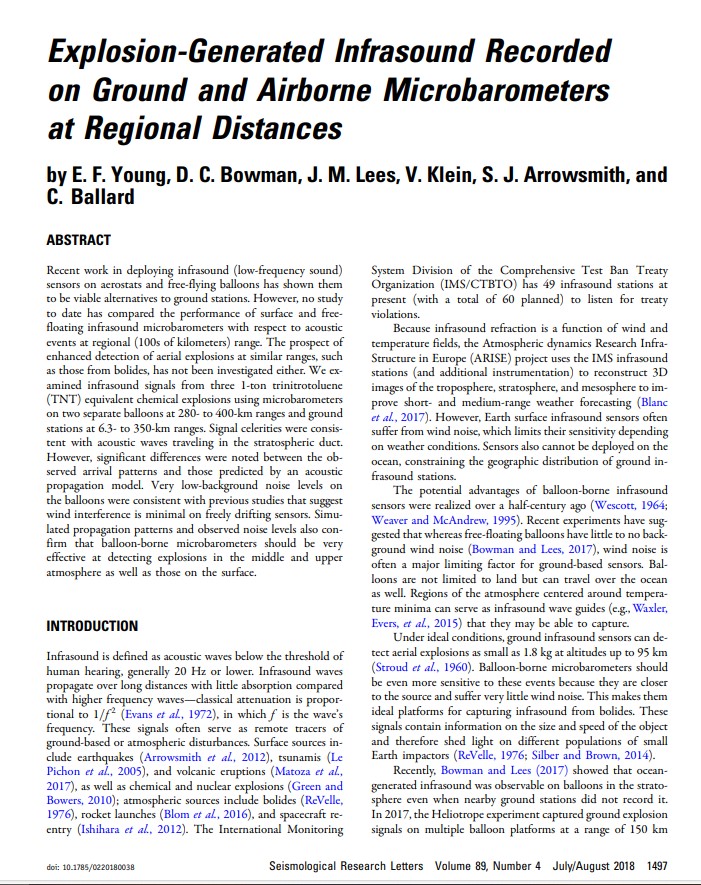Recent work in deploying infrasound (low-frequency sound) sensors on aerostats and free-flying balloons has shown them to be viable alternatives to ground stations. However, no study to date has compared the performance of surface and freefloating infrasound microbarometers with respect to acoustic events at regional (100s of kilometers) range. The prospect of enhanced detection of aerial explosions at similar ranges, such as those from bolides, has not been investigated either. We examined infrasound signals from three 1-ton trinitrotoluene (TNT) equivalent chemical explosions using microbarometers on two separate balloons at 280- to 400-km ranges and ground stations at 6.3- to 350-km ranges. Signal celerities were consistent with acoustic waves traveling in the stratospheric duct. However, significant differences were noted between the observed arrival patterns and those predicted by an acoustic propagation model. Very low-background noise levels on the balloons were consistent with previous studies that suggest wind interference is minimal on freely drifting sensors. Simulated propagation patterns and observed noise levels also confirm that balloon-borne microbarometers should be very effective at detecting explosions in the middle and upper atmosphere as well as those on the surface.
-
Explosion-Generated Infrasound Recorded on Ground and Airborne Microbarometers at Regional Distances
E. F. Young, D. C. Bowman, J. M. Lees, V. Klein, S. J. Arrowsmith, and C. Ballard
Penerbit :
Seismological Research Letters
Tahun :
2018
epaper
Geofisika
-
No Scan-
-
No Klasifikasidoi: 10.1785/0220180038
-
ISBN-
-
ISSN-
-
No Registrasi-
-
Lokasi TerbitUSA
-
Jumlah Hal10
-
Label-
-
Versi DigitalTIDAK
-
Versi FisikTIDAK
-
Lokasi Rak Buku Fisik//
-
Jumlah Exemplar Fisik Tersedia-




